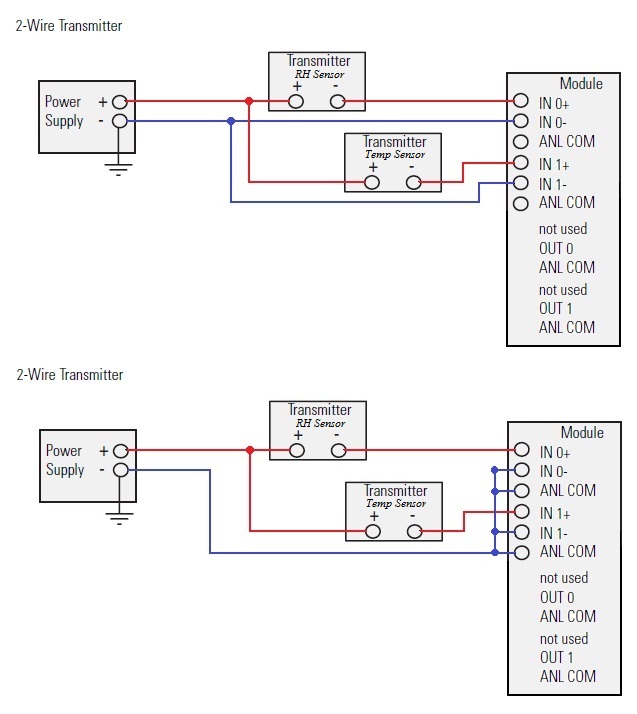DamianInRochester
Lifetime Supporting Member
I liked your recommendation of increasing the resolution of the measurements. I will do that as well.
Regarding your wiring recommendation (shown in bottom diagram of image below, representing both sensors in transmitters).

I was wondering what advantages/disadvantages I had in my original wiring, witch was literally wired as shown in the AB manual (or at least as I understood it). It's easier that way, but seemed odd having to bypass the comm ports on the card.
Thanks again and have a good weekend (or what's left of it)!
There was nothing wrong with how you had it. I was not entirely sure how you had it, so I just gave you point to point description that I knew would work.
If I had a nickle for every time a customer swore to me that had something hooked up right, only to find that they didn't I would be a wealthy man. I take nothing for granted anymore.



